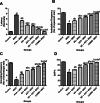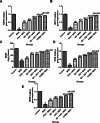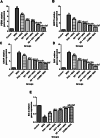Modulating Multiple Molecular Trajectories by Nutraceuticals and/or Physical Activity in Attention-Deficit/Hyperactivity Disorder (ADHD)-Like Behaviors in Rat Pups
- PMID: 40102360
- PMCID: PMC11920304
- DOI: 10.1007/s11481-025-10188-4
Modulating Multiple Molecular Trajectories by Nutraceuticals and/or Physical Activity in Attention-Deficit/Hyperactivity Disorder (ADHD)-Like Behaviors in Rat Pups
Abstract
Attention deficit/hyperactivity disorder (ADHD) is a neurodevelopmental condition affecting cognitive and social functions all over childhood. Monosodium glutamate (MSG) is a common food additive associated with ADHD-like symptoms in children. Nutraceuticals, like sesamol (SE) and astaxanthin (AST), or physical activity (PHA) were reported to possess beneficial effects on human health. Meanwhile, still their neuroprotective effect against ADHD has been poorly investigated. This study aimed to investigate the impact of SE, AST and PHA either separately or combined on ADHD-like behaviors induced by MSG in rat pups. Eighty-four male Sprague Dawley rat pups were randomly allocated into seven groups; control, MSG, (PHA + MSG), (SE + MSG), (AST + MSG), (SE + AST + MSG), and (COMB [PHA + SE + AST] + MSG) and treated for eight weeks. MSG-induced ADHD-like behavior was evaluated, via assessing behavioral outcomes; neurotransmitters' levels; five pathway biomarkers, coupled with histopathological and immunohistochemical studies. Rats exposed to PHA or treated with SE or AST either separately or combined exhibited enhanced attention, locomotor, and cognitive abilities, compared to MSG-intoxicated group. All treatments remarkably improved MSG-induced abnormalities in neurotransmitters' levels; biochemical markers; along with histological findings, via modulating HMGB1/RAGE/JAK-2/STAT-3, PI3K/AKT/CREB/BDNF, AMPK/SIRT-1 and PERK/CHOP pathways. Nevertheless, the combination of PHA with nutraceuticals (SE and AST) elicited more favorable effects in all measured parameters and histological findings, compared to other treated groups. In conclusion, this study revealed the superiority of the combination of nutraceuticals with PHA, over other standalone treatments, in amelioration of MSG-induced ADHD-like behaviors in rat pups, via fine-tuning of HMGB1/RAGE, PI3K/AKT/CREB/BDNF, AMPK/SIRT-1 and PERK/CHOP pathways.
Keywords: ADHD; Astaxanthin; Autophagy; Endoplasmic reticulum stress; Monosodium glutamate; Physical activity; Sesamol.
© 2025. The Author(s).
Conflict of interest statement
Declarations. Conflict of Interest: The authors declare no competing interests. Institutional Review Board: All experimental techniques were accepted and supervised by the Animal Care and Use Committee of the Faculty of Pharmacy, Al-Azhar University, with ethical approval number 429/2023. All animal experiments conducted in the current study complied with ARRIVE guidelines. The handling of animals was in accordance to the guidelines outlined in the "Guide for Care and Use of Laboratory Animals," published by the National Institutes of Health (NIH Publications No. 8023, revised 1978). Informed Consent: Not applicable.
Figures










References
-
- Adiguzel E, Bozkurt NM, Unal G (2023) Independent and combined effects of astaxanthin and omega-3 on behavioral deficits and molecular changes in a prenatal valproic acid model of autism in rats. Nutr Neurosci 27(6):590–606 - PubMed
-
- Al-Amin MM, Rahman MM, Khan FR, Zaman F, Mahmud Reza H (2015) Astaxanthin improves behavioral disorder and oxidative stress in prenatal valproic acid-induced mice model of autism. Behav Brain Res 286:112–121. 10.1016/j.bbr.2015.02.041 - PubMed
-
- Ali AA, Khalil MG, Elariny HA, Abu-Elfotuh K (2017) The role of mental and physical activities against development of Alzheimer’s disease in socialized and isolated rats (TDR). Brain Disord Ther 6:2
MeSH terms
Substances
LinkOut - more resources
Full Text Sources
Medical
Research Materials

